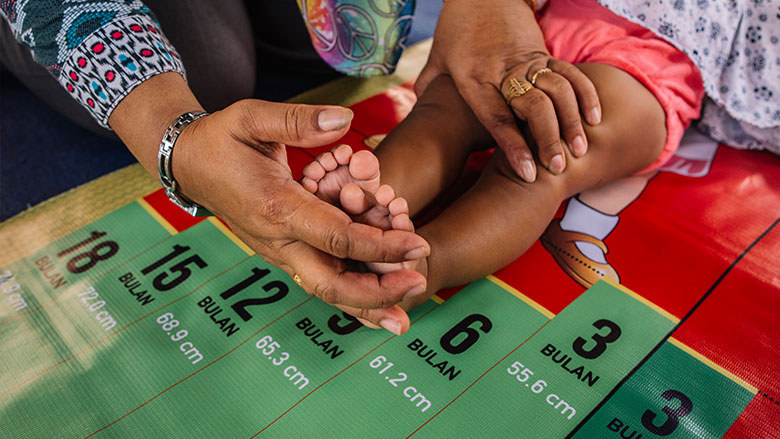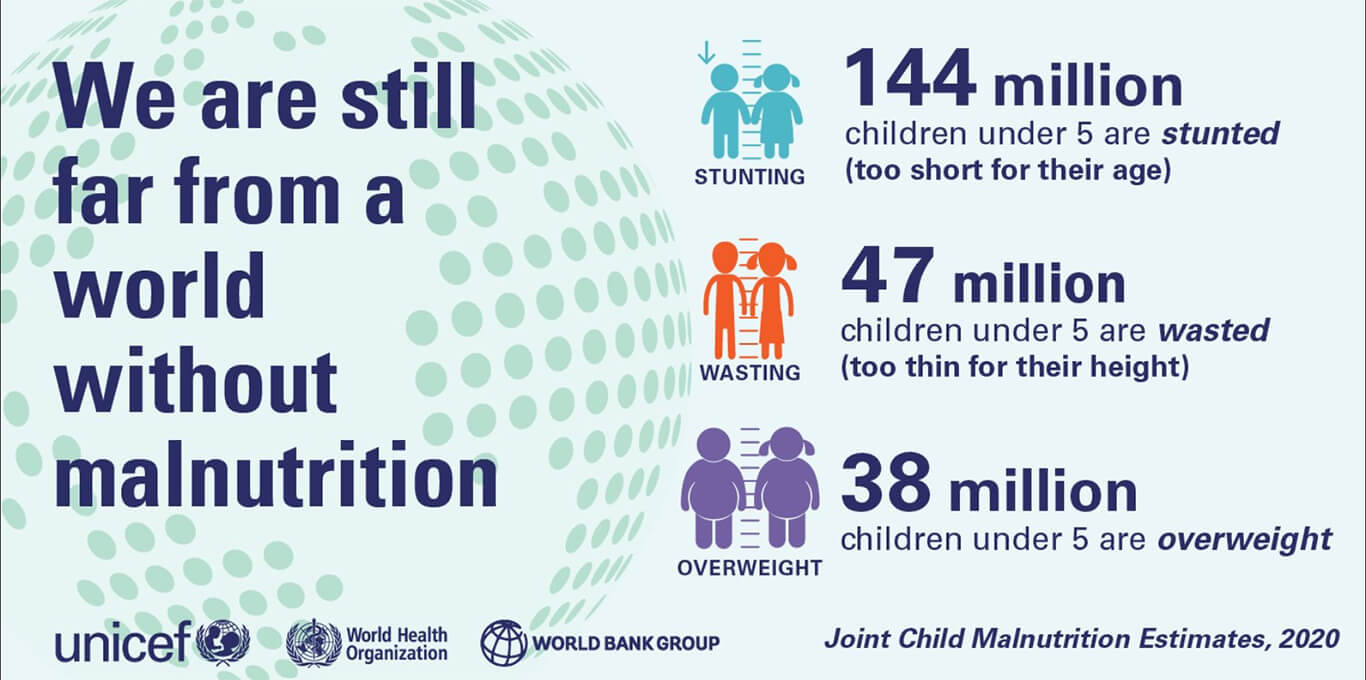Food. One of the necessities in life. In the 21st century, food scarcity isn’t an issue that we hear as much about anymore. What once used to be looked at only as a necessity has now transformed into a joy and art form. But even with how advanced our world has become, the issue of food scarcity, especially in children, is still ongoing and an important issue to address. But to understand more about what we can do to help, let’s understand the issue first.
What is the Zero Hunger SDG?
The Zero Hunger sustainable development goal was a goal set by the United Nations to decrease world hunger. With around 9% of the world’s population or 690 million people worldwide being hungry, this issue needs to be addressed head-on.
What is malnutrition?
Malnutrition is defined as the undernutrition and lack of essential vitamins in the diet. It has numerous different causes, which we can separate into three main categories. First, are the immediate causes, which are low quantities of meals and lack of nutrients. These are immediate issues that directly cause childhood hunger and malnutrition. Second, are the underlying causes, which include family food insecurity, inadequate dispersion of resources among family members, unhygienic living conditions, and inadequate health services. These causes are all that cause immediate issues. Finally, are the basic causes, which are poverty, lack of information, lack of economic and political security, war, and lack of resources at all levels. These are the structural issues that need to be solved first for the other issues to be resolved. Because there are so many different challenges and causes related to malnutrition that all need to be addressed, solving childhood malnutrition is a difficult and complex goal. But next, let’s understand the impacts that hunger and malnutrition have.
What are the impacts of malnutrition?
Childhood malnutrition is extremely widespread right now. In 2020 alone, over 149 million children under 5 were too short for their age and an additional 45 million were too thin for their height. On top of that, over 38 million children over the age of five are overweight, another indicator of poor nutrition. But it doesn’t just stop there. Malnutrition has devastating impacts on children, as around 45% of deaths among children under 5 were linked to undernutrition. Specific regions of the world have higher rates of malnutrition, with Indonesia seeing 1 in every 3 children being severely malnourished. Because of this, the developmental, economic, social, and medical impacts of the burdens of malnutrition are long-lasting and serious for individuals, families, communities, countries, and the whole world. We must find solutions to solving this issue.
What are organizations doing to help?
Worldwide, both local and international organizations are all working to solve this issue. Locally, numerous organizations are working to combat malnutrition. One example is Du Anyam, a social enterprise based in Indonesia that has been working to aid communities since its start. One main reason why Du Anyam was actually established was to combat the issue of child malnutrition that was severe on the island of Flores, Indonesia. They have created integrated locally grown nutritional foods, distributed nutritional packages, and provided nutritional education to help lower childhood malnutrition in the remote villages of Indonesia that they work with. On the international level, organizations like No Kid Hungry, the UN, WHO, UNICEF, and more have been working with the governments of countries to create policies and structural changes to solve the underlying and basic causes of malnutrition worldwide. But apart from supporting these organizations, what can we do to help?
What can we do to help?
Working with your community is one of the easiest ways to help. Finding organizations and social enterprises that work with communities are a great way to support collective efforts to fight malnutrition. It is important that malnutrition be treated as a community issue, rather than an individual one, so by working with organizations that can bring awareness on the topic, structural reforms and changes can take place, ending the cycle of malnutrition. Furthermore, volunteering at local organizations such as food banks can allow you to contribute directly to the cause. Whether your contributions are big or small, anything you can do can help decrease childhood malnutrition.
At the end of the day, there are so many issues in the world, but prioritizing childhood malnutrition must be one of our priorities. Today’s children are the future of tomorrow and are the ones carrying our society in the future. Protecting our youth through decreasing malnutrition can change the future of our world and lead us to our goal of zero hunger.
Sources:
https://www.who.int/news-room/fact-sheets/detail/malnutrition
https://www.who.int/data/gho/data/themes/topics/joint-child-malnutrition-estimates-unicef-who-wb
https://www.nokidhungry.org/coronavirus
http://www.southsudanmedicaljournal.com/archive/2008-05/undernutrition-in-adults-and-children-causes-consequences-and-what-we-can-do.html
https://www.unicef.org/nutrition/maternal-and-child-nutrition-humanitarian-action
https://scalingupnutrition.org/progress-impact/the-global-response-to-malnutrition/
https://www.who.int/health-topics/malnutrition#tab=tab_3


